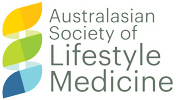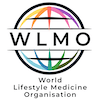
Locating the truth about health in a post-truth world
"One week they’re telling us you can’t eat this, then the next week you can’t eat that…”
“I’m going to go on a keto diet…”
“I follow this guy on Instagram who says you only need to do 3 minutes of high intensity exercise a day…”
“I’m starting 5:2 next week…”
“It doesn’t matter what you do – everything seems to kill you.”
Who of us hasn’t heard something like this from our clients and patients?
How did we get here? No-one argues about whether seat belts in cars save lives, or whether glass in your windows keeps the draft out or whether standing in the sun makes you hot. How did we get ourselves so confused and so misinformed about our own health?
There are, of course, several answers to that question, but at least one of them lies in the phrase that will now be forever etched into our minds, courtesy of the 45th President of the USA – Fake News.
Fake News is not new – it’s just got a new name. Back in the day we called it propaganda (literally “information to be spread”) and our common usage of the word refers to the idea of someone with a barrow to push or an agenda to run.
The notion of propaganda has been with us for millennia and human beings have always had to spend some time discerning the truth about what they’re told. The difference now is the speed with which information can be disseminated, the volumes in which this can be done and the repetition of it all until the message is deeply embedded. The power of social media to influence is extraordinary and undeniable.
As health professionals, one of our duties is to help our clients make wise choices about their own health and wellbeing (when we’re not with them). A vital part of this in our current era is to equip our clients to make some clear and careful judgements about health messages they hear.
Unfortunately, some recent research has shown that false information spreads more quickly and more widely than true information. One reason for this may be that false information often contains novel ideas, which are inherently appealing to us and which we appear more likely to share. Are you likely to remind your friends that eating an apple each day is good for your health? Probably not. But if I tell you that super-apples grown with dehydrolised water can improve your liver function, you may be more likely to share that because it’s novel, it sounds intriguing and it upsets the status quo or “disrupts” – an idea we love.
And here’s the really worrying part of it all: smarter people may be more prone to misinformation. The mechanism is straightforward – greater brainpower allows more complex rationalization of incorrect beliefs. One final point to note – it’s not Millennials or Gen Z that’s spreading all this misinformation. Those most likely to spread misinformation are aged over 65!
So what are some steps we can all take to help clients evaluate information carefully and make wise choices? Here’s my simple how-to for your clients:
Check the source of the information:
If it’s claimed to be “ancient knowledge” or announced through mass media rather than scientific avenues, be prepared to be skeptical of what you’re hearing until you can verify it. Also check whether the person associated with this information is selling something alongside it. Remember the words of the legendary investor Warren Buffett – “Don’t ask the barber if you need a haircut.”
Check against what’s known:
If the information is claimed to be a “new discovery” or from a “previously unknown” source, be skeptical. Remember that the progress of knowledge (with a few exceptions usually published in the scientific literature) is generally evolutionary rather than revolutionary. What we know about diet or exercise or tobacco or alcohol is not suddenly going to be turned on its head overnight. If the information you just got stands in stark contrast to what you already knew, be skeptical of the new, not the established.
Remember:
The old sales and marketing adage: “If it sounds too good to be true, it probably is.”
As a health professional:
Establish yourself as a non-judgmental avenue for discussion of this information with your clients. Invite them to discuss new information with you – don’t dismiss it without an opportunity to engage them in a review of the ideas first. Listening to their ideas does not mean agreeing with or supporting them.
If you want to read more about evaluating information to determine how scientific or pseudoscientific it is, here’s a good link.
In a world swimming in data, (currently about 18 zettabytes or 1 trillion gigabytes), people need all the help they can get to read, reflect, discern and decide. I operate from a position of believing that we all want the same thing – to understand what will work, why it will work and how I can do it. The more we desperately want this, the more vulnerable we are to suggestions that sound great but are empty.
Ultimately we won’t help our clients by being dismissive of questions about what they’ve read or heard. We won’t help them by not engaging with them on what usually represents a genuine search for what will work. But we can equip them to make better evaluations by encouraging them to reflect on it and compare it to information and knowledge they already have and which is supported by the weight of evidence.
This article has been written for the Australasian Society of Lifestyle Medicine (ASLM) by the documented original author. The views and opinions expressed in this article are solely those of the original author and do not necessarily represent the views and opinions of the ASLM or its Board.
Simon Matthews is the CEO of Wellcoaches® Australia. He’s a Registered Psychologist, Fellow of the Australasian Society of Lifestyle Medicine, and Member of the Australian Psychological Society.



